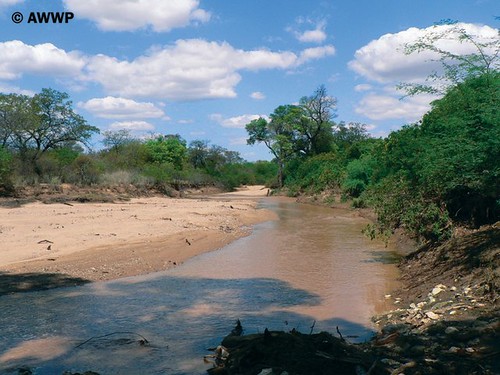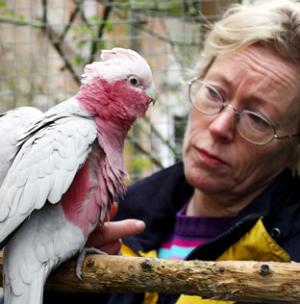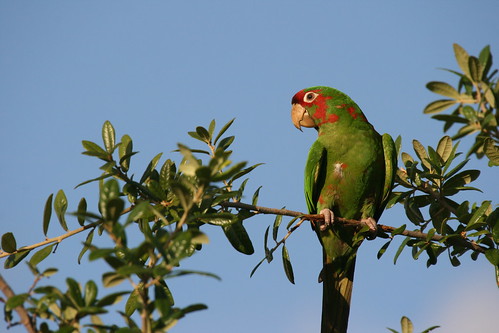Tas breeding program aims to save endangered parrot
 Tuesday, February 3, 2009 at 7:45
Tuesday, February 3, 2009 at 7:45 A captive breeding program in Tasmania is trying to increase the number of orange-bellied parrots released into the wild as the population falls to just 100.
 Tuesday, February 3, 2009 at 7:45
Tuesday, February 3, 2009 at 7:45 A captive breeding program in Tasmania is trying to increase the number of orange-bellied parrots released into the wild as the population falls to just 100.
 Sunday, February 1, 2009 at 13:00
Sunday, February 1, 2009 at 13:00  AWWP owned Concordia Farm which is a part of historic range of the Spix's MacawRestoring the Spix's Macaw habitat
AWWP owned Concordia Farm which is a part of historic range of the Spix's MacawRestoring the Spix's Macaw habitatFebruary 2009. After seven months of negotiations and navigating legal minefields, the Al Wabra Wildlife Preservation (AWWP) organisation, owned and founded by H.E. Sheikh Saoud Bin Mohd. Bin Ali Al-Thani, has purchased Concordia Farm in Brazil.
 Saturday, January 31, 2009 at 14:37
Saturday, January 31, 2009 at 14:37  Percy back with his owner Charlotte Dunnill A COCKATOO is safely back home after causing a bit of a flap when he spread his wings and took off for a fortnight.
Percy back with his owner Charlotte Dunnill A COCKATOO is safely back home after causing a bit of a flap when he spread his wings and took off for a fortnight.
His owner, beauty salon proprietor Charlotte Dunnill, pictured, said four-year-old Percy took the flight for freedom from her home at Avon near Sopley in the New Forest a fortnight ago.
Despite his bright pink and grey plumage he seems to have avoided being attacked by avian predators and was eventually caught at Moyles Court, midway between Ringwood and Fordingbridge.
 Eolophus roseicapilla - Galah | in
Eolophus roseicapilla - Galah | in  Rescue
Rescue  Friday, January 30, 2009 at 14:28
Friday, January 30, 2009 at 14:28  Wednesday, January 28, 2009 at 3:50
Wednesday, January 28, 2009 at 3:50  Mitred parakeet (Aratinga mitrata) in Fort Lauderdale, FL
Mitred parakeet (Aratinga mitrata) in Fort Lauderdale, FL
The parrot reports keep coming in. (For anyone who got here late, I had asked readers for any information on the red-and-green parrots, conures, or parakeets that frequent northwest Berkeley. Based on the response, the flock consists of four mitred parakeets, AKA mitred conures, and they’re seen most often in the vicinity of James Kenney Park. Most of the sightings have been fairly recent, although Steve Halflich has been observing them for 19 years.)